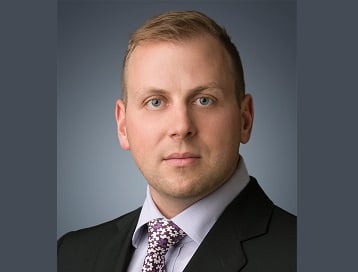A portfolio manager shares his views on the challenges facing advisors in today’s markets

With volatility in the markets on the rise as geopolitical uncertainty continues to make its mark, investors are getting nervous. In Canada, household debt levels are hitting new highs, retirees and pre-retirees face are not being compensated for their fixed income investments, valuations are stretched, and 2018 earnings per share growth is forecasted at 11% - a drop from previous years. So, where exactly can investors find the returns they need to give their portfolios a boost?
“We see a lot of opportunity in Europe eventually, Japan is okay, and emerging markets remain cheap, although that is often the case for a reason – there is not always value in cheap valuations,” says Chad Larson, Senior Vice President, Portfolio Manager - National Bank Financial. “You can see that with what tech stocks have done for years; sometimes you have to pay for growth.”
Larson currently has a negative view on bonds and is concerned about valuations in the equity markets, and although he’s not currently planning any major adjustments, Larson is preparing for increased equity volatility with elevated cash and some hedged protection. “Our view is cautiously optimistic while being prepared for increased volatility,” he says.
In addition to the pressure to find decent returns, Larson also sees advisors being caught up in what he describes as a “race to the bottom” in terms of costs. Under increased pressure from clients and the media, the banks and larger dealers have reacted by dropping fees, making things more transparent and pushing the lowest cost possible solutions for clients. “Warren Buffet is a great stock picker but not every investment advisor is, and I believe a lot of the senior guys’ value proposition was on individual securities selection,” Larson says. “In the advent of achieving prudent diversification for clients, we have seen a push to find the cheapest thing possible because advisors are scared to have discussions about fees or to articulate their value proposition.”
Larson manages large discretionary portfolios, one of which consists solely of ETFs. When the oversight committee noticed Larson had selected a global dividend exposure ETF at a cost of 65 basis points, they suggested he instead opt for an alternative ETF that cost just 20 basis points. Larson stood his ground and said he’d reassess this year: the ETF he had chosen had an active mandate and a momentum tilt, so he was satisfied with paying for that active approach.
“That ETF returned 24% while the index did 12%; looking for the lowest cost option doesn’t necessarily mean the best investment,” he says. “I’m happy to have that conversation with my client and put my neck on the line. Our role as investment advisors is to navigate the macro landscape and position our clients for style attribution. We’re going to have to be able to be tactically allocate to momentum or value, to quantitative or qualitative.”
Related stories:
Is capital gains tax going to be increased?



